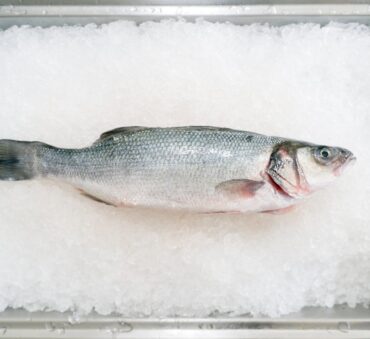Fast food has become a regular part of the American diet, with new fast food establishments popping up daily. In the United States, 36.6% of adults consume fast food on a given day, meaning that every day, one out of three Americans will choose to visit a fast food restaurant.
While there are many campaigns against the health issues related to eating junk food, food waste statistics now give us a window into understanding how fast food waste contributes to the current food waste crisis.
The history of food waste in America shows us that food waste started with early settlers but has evolved over time due to industrialization. With fast food establishments in high demand, there’s a new spotlight on the environmental, economic, and social consequences of junk food waste.
Let’s explore this topic in more detail, covering the environmental impact of fast food, the effects of fast food packaging, and how companies can implement sustainable solutions.
Key Takeaways
- Fast food restaurants generate a large amount of waste due to their operating model, with readily available food making it hard to predict customer demands and leading to overproduction.
- Only 14 percent of plastic packaging is recycled; single-use food and beverage packaging is a prime source of the estimated 269,000 tons of plastic pollution currently floating around in the world’s oceans.
- Fast food waste management strategies are crucial in reducing the amount of junk food waste in landfills, which may include recycling and composting programs, creating reusable containers, and working with waste management companies.
- Consumers can also minimize fast food waste by practicing portion control, utilizing recycling bins, purchasing reusable cups, and supporting companies that implement eco-friendly solutions.
- A growing number of companies are prioritizing waste management in the fast food industry by implementing company-wide initiatives to help meet internal goals and reduce their environmental impact.
The Environmental Impact of Junk Food Waste
The fast food industry in the United States is one of the most well-established in the world, meaning that poor fast food waste management has severe environmental implications. Food waste in fast food restaurants affects the environment in multiple ways, including excess energy use, wasteful packaging, water contamination, increased greenhouse gas emissions, and the overuse of landfills.
By understanding the environmental impact of fast food, small and large fast food restaurants can better understand the importance of a comprehensive waste management strategy.
Food Waste in Fast Food Restaurants
So, how much waste does fast food produce?
In the United States, food waste is estimated at between 30-40 percent of the food supply, corresponding to approximately 133 billion pounds and $161 billion worth of food. Of this, 40% of the waste comes from restaurants, grocery stores, and food service companies.
Every year, restaurant food waste in the U.S. generates approximately 22 to 33 billion pounds of food waste. In fact, food waste from restaurants makes up 15 percent of all the food that ends up in landfills. With over 200,859 fast food restaurant businesses in the U.S., a large portion of this is a result of food waste in fast food restaurants. But why is so much waste being produced?
Fast food restaurants generate a large amount of waste due to their operating model, with readily available food making it hard to predict customer demands and leading to overproduction. And since food waste in landfills is becoming an increasingly large problem, waste management in the fast food industry is a top priority.
This industry is increasingly recognizing the importance of sustainability, with some of the leading companies starting company-wide initiatives to minimize their environmental impact. Sustainable strategies to better manage food waste include food donation programs, improved inventory management, and waste-to-energy projects.
A great example of this is a major fast food chain dedication to reducing food waste at all levels of the supply chain. Their 2022 Sustainability Report shows that 100% of their new restaurant openings participated in their food donation “Harvest Program,” with over 282,000 meals donated to those in need and a number of other initiatives carried out to drive change.

Fast Food Packaging Waste
Food waste isn’t the only type of waste generated in fast food establishments, with solid waste being a huge problem throughout the industry. Of the solid waste produced, the majority is packaging waste, which is highly recoverable. Fast food packaging waste statistics show us that the theoretical recovery rate of packaging waste is 93% of the total annual amount, with only 29% of the total annual amount actually being recovered.
Another report claims that less than 14 percent of plastic packaging, which is the fastest-growing form of packaging, gets recycled. Among the many damages to the environment, single-use food and beverage packaging is a prime source of the estimated 269,000 tons of plastic pollution currently floating around in the world’s oceans,
With fast food in high demand, an increasing amount of plastic packaging is being sent to landfills, making innovative packaging solutions a high priority in the fast food industry. Here are some of the ways that leading companies are doing their part.
Another major fast food chain’s packaging, toys and waste strategies support a circular economy, addressing challenges related to recycling infrastructure, demand for recycled content, and the development of new materials. Some of the ways they’re doing this are by eliminating unnecessary packaging and streamlining materials, transitioning to more sustainable materials, and engaging in strategic partnerships.
A prominent coffeehouse brand is also doing its part, with a goal to cut its carbon, water, and waste footprints in half by 2030. One of their strategies is to shift away from single-use plastics, with multiple reusable programs and operating models being tested. To further this goal, some of these leading brands have invested $10 million in the NextGen Consortium, an organization that addresses single-use foodservice packaging waste and is dedicated to finding innovative and sustainable solutions.
However, these initiatives need to be matched with the cooperation of consumers. Consumers can do their part in multiple ways, whether it’s by opting for reusable cups, always choosing to put plastic waste in the recycle bin, or showing support to establishments that are making an active difference.
The Economic Impact of Junk Food Waste
The economic effects of food waste are hard to ignore, annually costing an estimated $218 billion, or 1.3% of GDP in the United States. While this number includes the total amount of waste generated at all levels of the supply chain, it helps us understand the severity of the food waste crisis.
For fast food establishments and restaurants, excess food that goes unsold or unused results in direct financial losses due to wasted ingredients and labor costs. This is also true during production and transportation, with improper manufacturing techniques and poor transportation logistics adding to the waste produced by fast food establishments. As mentioned, fast food waste also results in the loss of water, energy, land, and labor—all things that cause severe economic consequences.
The economic losses faced by businesses have a direct influence on the price of their products, as they need to account for food losses experienced in the supply chain. Aside from higher prices, consumers who purchase more food than they consume are paying for food that ends up in the trash.
Even more, municipalities experience economic consequences due to food waste. This is because waste collection, transportation, and landfilling or incineration of food waste are huge financial responsibilities for local governments.
To combat these economic losses, effective fast food waste management strategies should be in place to offer potential savings and economic benefits to establishments. By reducing waste, businesses can save on purchasing expenses, labor costs, and waste management fees. Implementing a circular approach is another great strategy, as businesses can get the maximum value of each resource, reducing the need for new raw materials and cutting costs associated with waste.
A recent study shows that food-related businesses such as canteens, hotels, and restaurants can experience up to a 14-fold return on their investment in food waste reduction programs. This shows the potential long-term benefits for fast food establishments.

Fast Food Waste Management Strategies
An increased number of fast food chains are prioritizing waste management strategies throughout their operations to minimize fast food environmental effects. There are many ways they can implement changes, such as by creating recycling and composting programs, creating reusable containers, and working with waste management companies.
These efforts can be broken down into two distinct groups: reducing the amount of waste generated and implementing strategies to manage waste that is produced.
Reducing Fast Food Waste at the Source
As we’ll discuss below, there are many strategies that focus on waste management in the fast food industry. However, businesses should also prioritize reducing waste at the source, as preventing wasted food, or source reduction, is the top tier of the Wasted Food Scale. So how do you prevent waste before it occurs?
There are many strategies that can be used to reduce food waste, such as optimizing resource use with precision farming, enhancing soil through crop rotation, optimizing logistic routes, temperature-controlled storage and transportation, and staff training.
In addition, one of the keys to reducing food waste is the implementation of food waste technology. Technological advances help reduce waste in a number of ways, such as improved inventory management and demand forecasting.
The United States Environmental Protection Agency states that reducing food waste has many benefits, including saving energy and resources associated with growing, preparing, and transporting food, preventing pollution, reducing greenhouse gas emissions, avoiding disposal and labor costs, and feeding more people with the amount of food produced.
Enhancing Recycling and Composting Efforts
While reducing junk food waste is a huge goal in the fast food industry, there’s also equal importance to creating sustainable waste management practices. With the goal of keeping food and packaging waste out of landfills, fast food chains have increased their recycling and composting efforts in recent years. The benefits?
Converting food scraps into compost reduces landfill waste, creates nutrient-rich soil, increases cost savings for businesses, and can reduce the carbon footprint of food waste by about 50%, making it a great option for fast food establishments. Fast food chains are also working to reduce their fast food packaging waste in a number of ways, one of which is recycling. With a large amount of fast food packaging consisting of recyclable materials, there’s a huge opportunity to repurpose packaging.
Innovations in technology also help make this possible, making way for efficient techniques such as aerobic decomposition to handle large volumes of food waste. As we’ll see below, the implementation of new technology offers establishments a new opportunity to streamline their waste management efforts.
As companies look for new solutions, many turn to waste management companies that specialize in large-scale food waste services. By diverting food from landfills, waste management companies help fast food chains comply with food waste laws and create and maintain a more sustainable approach.
The Role of Consumers in Minimizing Junk Food Waste
Changing consumer behavior is also an important part of the fight against junk food waste. There are multiple things that consumers can do to lessen their environmental impact.
To start, consumers should practice portion control by only ordering the amount of food they plan to consume. Why?
Because overpurchasing is a huge contributor to food waste, meaning that leftover food is often sent to landfills to decompose and produce methane emissions. If we all changed our behavior regarding overpurchasing, a large amount of waste could be diverted from landfills, leading to huge environmental benefits.
Consumers should also educate themselves and partake in the waste management strategies that fast food chains are implementing. This may include putting packaging in recycling bins, purchasing reusable cups, or helping spread awareness of the current food waste crisis.
By supporting eco-conscious businesses, customers motivate fast food establishments to continue creating innovative solutions to food waste.

Technological Innovations in Junk Food Waste Reduction
Advances in technology help reduce fast food waste by creating more sustainable solutions. Some of the ways companies can use technological innovations to reduce waste are through biodegradable and smart packaging solutions via AI and machine learning for effective food waste management.
Biodegradable and Smart Packaging Solutions
Biodegradable packaging is packaging that has been designed to break down naturally over time. Common materials used in biodegradable packaging include cornstarch, mushrooms, seaweed, cellulose, and paper.
Switching to biodegradable packaging is a great way to reduce fast food plastic waste, which comes with multiple benefits, including a reduction in production costs, a reduced carbon footprint, the use of non-toxic materials, and appealing to customers who prioritize eco-friendly solutions.
Smart packaging is another great option, as it’s used to extend a product’s shelf life, monitor freshness, display information on quality, and improve product and customer safety. By using technology to monitor factors such as temperature, humidity, and gas levels, smart packaging helps consumers make informed decisions about food freshness and consumption. For instance, color-changing indicators on packaging can signal when food is nearing its expiration date.
Edible food packaging is another sustainable packaging solution. Edible packaging can take various forms, such as films and wrappers, to protect food while remaining edible. This removes the need for single-use packaging and non-recyclable materials.
Wendy’s commitment to advance sustainable packaging is a great example of this. Not only did they eliminate styrofoam from restaurants in 2012, but they reduced fiber and plastic in several packaging formats, reducing by several million pounds the amount of paper and plastic materials used in these items.
AI and Machine Learning for Efficient Inventory Management
Food waste technology uses different technological advances to reduce food waste, focusing on things such as collection, treatment and recycling, and prevention. In fast food chains, the implementation of artificial intelligence (AI) and machine learning algorithms revolutionizes inventory management by offering advanced solutions.
Conclusion
As waste management in the fast food industry continues to grow, food and packaging waste will be increasingly kept out of landfills, offering huge environmental benefits. By having an external partner in waste management, companies can comply with state-wide initiatives and regulations and help reduce fast food waste around the country.
At Shapiro, we have comprehensive waste management solutions to help small and large fast food chains manage their waste in an environmentally friendly way. With our food waste management and recycling services, we’ve helped lower the carbon footprint of over 350 companies all over North America, with over 1,060,000,000 pounds of organic waste diverted from landfills.
If you’re interested in a waste management solution tailored to your company’s needs, contact us today.
Baily Ramsey, an accomplished marketing specialist, brings a unique blend of anthropological insight and marketing finesse to the digital landscape. Specializing in educational content creation, she creates content for various industries, with a particular interest in environmental initiatives.



